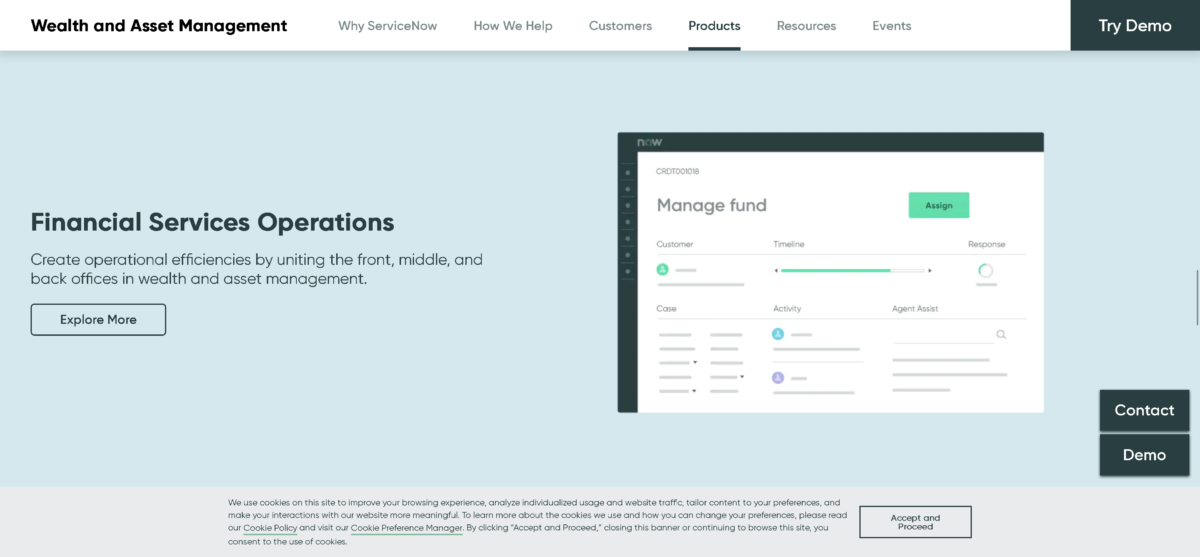Nearly three years ago, Magento declared that they would be ending support for their Magento 1 software. All versions of Magento from 1.1 – 1.9 would then work without maintenance, support or security patches.
As the fateful day in June 2020 draws close, it’s decision time for ecommerce businesses – upgrade to Magento 2.0 or change course with BigCommerce?
Magento and BigCommerce are platforms used by businesses to sell products online. The core difference lies in the nature of the two services – Magento is a PaaS (platform as a service) and open source, which means that they give you the source code for your Magento web store to customize it according to your needs.
If you don’t have a background in coding or an in-house team of developers, you’ll have to rely on third-party developers for creating customized plugins and enhancements for your website. It’s possible to hire experienced developers to design and configure your website to your liking, but that would drive up the costs.
Usually, large companies with huge budgets, in-house design and development teams are drawn towards Magento’s PaaS platform.

BigCommerce, on the other hand, is a cloud-based software as a service (SaaS) platform with competitive and affordable plans for businesses of all sizes. Customers who choose Magento have to pay regular costs due to needing developers and patches/updates. This is on top of the fee for the licensed software. With BigCommerce, the total cost of ownership is much lower and you can access your ecommerce online store from any web browser using an internet connection, making changes as required.
SaaS platforms like BigCommerce host content for your business – they have cloud-based data storage and maintain servers to provide your customers with the information they need when they log on to your site. They also run security patches, offer regular upgrades and provide infrastructure maintenance to their clients, ensuring secure ecommerce services for stores.
There’s no need to hire expensive web developers and designers to customize your ecommerce website with BigCommerce – it’s a simple DIY job and you’ll have plenty of options available. The platform offers backend support and maintenance, so there’s no need to have a complete team of in-house IT professionals to manage your website. However, if you do have an in-house team of developers, BigCommerce has open APIs that support integrations to existing systems. This means that developers could still work on creating custom apps and innovating. With other SaaS ecommerce platforms, this is not possible. No matter if you’re a one person business, or one with a developer team – BigCommerce is a great fit.
If your online store still uses Magento 1, you’ll have to have a full re-platform of your website at all costs. It’s the only way to ensure the continued security of your customer data – if you fail to make the switch by June 2020, you are leaving your store and its buyers open to considerable risk.
Now, the question is, where do you go from Magento 1?
Well, you can either decide to upgrade to Magento 2 or switch to a completely different provider.
Most store owners have considered moving to Magento 2 hoping that the transition could be smooth and trouble-free. Unfortunately, they are discovering it won’t be the case – given that Magento 2 has a completely different architecture and the base technologies are very different from Magento 1. Since merchants can’t just upgrade their store like they could in previous versions (1.8 to 1.9 for example), moving from Magento 1 to Magento 2 requires the same level of effort as moving to a completely different platform.
Whether you’re replatforming to Magento 2 or changing your pace with BigCommerce, re-platforming is unavoidable.
This is the right time to figure out what’s best for your ecommerce business or risk upgrading to the wrong platform. Next, we detail some key points to consider before you begin re-platforming.
Re-platforming can open up some exciting opportunities for your website.
If you are an ecommerce merchant planning to re-platform soon, make sure you consider the following points:
How will the re-platform impact your trade? Can the next platform easily be integrated with your on-premise or office-based infrastructure? Will the data be transferred automatically, or will you have to transfer it manually?
A platform change might require on-premise or hosted solutions, both of which have their own set of challenges for your business.
Existing processes should be mapped out, including workflows and the types of data required by the system – this helps visualize how the system works.
It also defines how technologies interact with each other, and this info can be used for planning and figuring out what needs to be removed, updated or changed completely.
Sometimes it can be cost-effective to alter your processes to fit the ecommerce platform instead of finding a bespoke solution for your website. Think of it as an opportunity to inspect your business functions more closely to find out how they can be improved. It will save you from having to make changes to these functions after the site is up and running.
You’ll have to pay for site development and data migration from old to the new platform, as well as the regular upkeep of your new site. These costs can add up really quickly, and you may also need to invest in training people how to use the new platform.
Choose the platform that’s more in line with your needs and also cost-effective.
Re-platforms can be a challenge for businesses. You need to supervise the procedure, manage stakeholder expectations, and deliver on the goals you’ve set. This is not taking into account any unexpected issues or interruptions that might arise to slow down the process.
Once you’ve launched the site after re-platform, keep up with analysis, testing site performance to keep it running as expected.
Everything from the design, speed and interface should help employees and customers get things done.
Developers may be able to adapt but content creators writing product descriptions and web copies for landing and pillar pages must also become accustomed to the new platform.
There might be a learning curve and consequent drops in productivity. However, once you are comfortable with the platform, you will be able to move much faster with BigCommerce than you would with other ecommerce solutions. Testing the platform on an ongoing basis will help you get there sooner.
Ensure that you have carefully planned the re-platforming process to facilitate your customers and team members as much as possible. Make sure that all your digital assets are secure and ready for the move.
Also, take care of the following considerations:
It’s important to know where the existing system is lacking and how it can be improved. Seeking customer and employee feedback through surveys, telephonic or personal interviews, and focus groups will help you get a clear idea of what needs to be done.
Their response can shape up your operations, site design and responsiveness issues, and clarify your objectives when re-platforming your ecommerce site. It can also help you decide which platform is better for your needs.
Work with your IT experts and corporate decision-makers to understand the requirements of your project and let them lead the project.
The involvement of senior executives, especially for a large ecommerce company, will make decisions easier as there will be fewer last-minute changes involved.
Both Magento and BigCommerce are solutions for ecommerce businesses, but there’s one major difference between the two. Big Commerce is a cloud-based software-as-a-service (SaaS) solution, while Magento is an open-source platform-as-a-service (PaaS) solution.
Magento 2 also offers a cloud-based infrastructure, which is why it’s challenging to transfer everything from Magento 1 to 2.
Magento is open source, meaning the source code is available to anyone. You can hire third-party developers to make enhancements to your website’s interface and make it look and behave exactly how you want it to. They have the flexibility to design and configure an ideal user-friendly ecommerce platform for you. However, developing in this way usually costs a budget that only larger companies can afford.
Magento 2 is cloud-based for the most part; this means that you will have to work on your website from scratch. You’ll have to find the right agency or have your in-house IT team rework the site if you switch to Magento 2. The costs of maintaining an agency-partnership make re-platforming to Magento 2 an expensive solution. It is worth noting that not all Magento 2 versions are cloud-based.
BigCommerce is a predesigned, customized solution where the company has already set up and is hosting your webstore. Flexible APIs, webhooks, useful integrations for digital marketing, product reviews and creating loyalty programs to proliferate your brand are built into the SaaS platform.
One huge difference is that adding apps and extensions is a lot faster and easier with BigCommerce than it is with Magento. With BigCommerce, you are adding apps on top of an existing system rather than trying to fit an extension into the customizations you’ve made on Magento.
PCI and DSS compliance is a must for all ecommerce sellers – those on Magento 1 will lose that in June 2020.
According to a RiskIQ, $2,900,000 is lost each minute to cybercrime – this makes the $1.5 trillion lost to cybercriminals in 2018 seem like a realistic figure. So there’s no point risking security compliance to save costs.
BigCommerce hosts and maintains your platform while also ensuring PCI compliance. With Magento 2, if you make any customizations at all, you will have to meet the compliance requirements yourself, making it more costly than it needs to be.
Updates, patches and bug fixes happen automatically with BigCommerce, whereas with Magento 2, you’d have to do these manually.
You can customize your website theme, create check-out pages, do email marketing, apply chatbots, and manage products with both BigCommerce and Magento 2.
However, BigCommerce makes it possible for you to concentrate on business needs, especially if you’re in a B2B niche. You might also need specialized capabilities like pricing according to different customer segments and gift card requirements – it can deliver.
If you need a unique feature from Magento 2, you can build it and make it yours. With BigCommerce, you could go and build your own custom app or integration using APIs, and then connect it to your BigCommerce store. There are some things you can’t do if there aren’t APIs already in place or the change would require modifying the source code, as this is not possible on a SaaS platform.
However, you get shipping, email marketing, reward program and other apps out of the box with BigCommerce and they install directly to your website as you download.
Although Magento’s marketplace does offer more apps, developers need to meet predefined standards to submit an extension or plugin, and the approval process takes time. The onus of upgrading and maintaining those extensions and plugins is on you.
Moreover, the installation process is more traditional in Magento, where your app developer has to integrate it into your store manually. It takes time for your app to go live if you’re going for Magento 2. With BigCommerce, you simply select and install the app directly without having to maintain it.
Both Magento and BigCommerce offer additional functionality to larger businesses that have complex processes, bigger catalogs, high-volume sales and need ERP integrations because of them. BigCommerce has dedicated resources for better load times and advanced tools for coding.
Magento, on the other hand, has Adobe Commerce Cloud that enhances the digital experience from when a user reads the content on site to when they check-out. BigCommerce does support the ability to use Adobe Experience Manager and this would would provide more options than just Adobe products.
By default, BigCommerce wins because it’s an out-of-the-box, open SaaS solution.
It has the required themes, customizability and functionality without much the hassle involved. Your store will be live faster than if you were to opt for Magento 2.
We’ve outlined the core differences between Magento and BigCommerce. Now it’s up to you to decide whether you want a customizable solution that’s also expensive or one that comes straight out of the box and costs less. Both are highly functional and require re-platforming, which can be a serious undertaking.
But you’ll have to decide fast and migrate from Magento 1 as it’s nearing the end of its support in June 2020. You’ll need a new platform up and running before that, with all your data and necessary features, extensions and more, in place and working correctly. If you don’t switch soon, you’re leaving your site, your customers and data at risk.
Branded post by BigCommerce
By Ian Haynes





